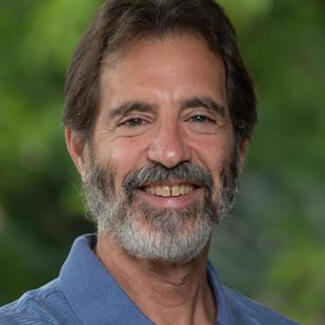
Howard Zebker helps guide a search for active volcanoes and tectonic plate movements on Venus
Algorithms and techniques pioneered by Zebker and his lab will measure and translate data into high-resolution 3D maps of Venus’ outermost layer.
Venus is often called Earth's sister planet or twin because the two worlds are of similar size and density. Yet the second rock from the sun is hot and inhospitable in the extreme. "That's one of the reasons we know so little about the surface," said Professor Howard Zebker. "If you send a spacecraft to the surface of Venus, which has been done several times, they only last a few minutes until the hot acid burns them up."
Howard is a member of the science team for VERITAS, one of three missions to Venus announced in June 2021 by NASA and the European Space Agency. As part of the VERITAS mission – which is expected to launch around 2028-2030 – instruments aboard the spacecraft will measure how long it takes radar signals to bounce back from a series of precise locations at different times. This will yield pairs of images that can be combined to reveal changes in altitude at the surface using a technique known as interferometric synthetic aperture radar, or InSAR.
Algorithms and techniques pioneered by Howard will help to guide these measurements and translate them into high-resolution 3D maps of any ongoing deformation of Venus' outermost layer. On Earth, InSAR has been used to map uplift and subsidence related to groundwater pumping; to detect sinkholes; and to study glacier movements, earthquakes, volcanic eruptions, landslides and more. But this is the first time the techniques will be used by spacecraft to identify active fault movements beyond our world.
While NASA's Jet Propulsion Laboratory in Pasadena, Calif. will manage the VERITAS (Venus Emissivity, Radio Science, InSAR, Topography & Spectroscopy) mission, students working in Professor Zebker's lab – Radar Remote Sensing & Radar Interferometry Group – will help to refine algorithms for the mission over the next several years and work to interpret the data that come in once VERITAS makes it into orbit.
Howard Zebker is a professor of geophysics and electrical engineering. He discusses his role in the VERITAS mission; how InSAR will help to answer key questions about volcanic activity and tectonic plates on Venus; why our hothouse twin may hold insights relevant to modeling of climate change on our own planet; and paths for interested students to get involved.
Excerpted from Stanford News, "Is Venus still geologically active? Stanford expert explains technology powering NASA's quest to understand Earth's twin", June 29, 2021.